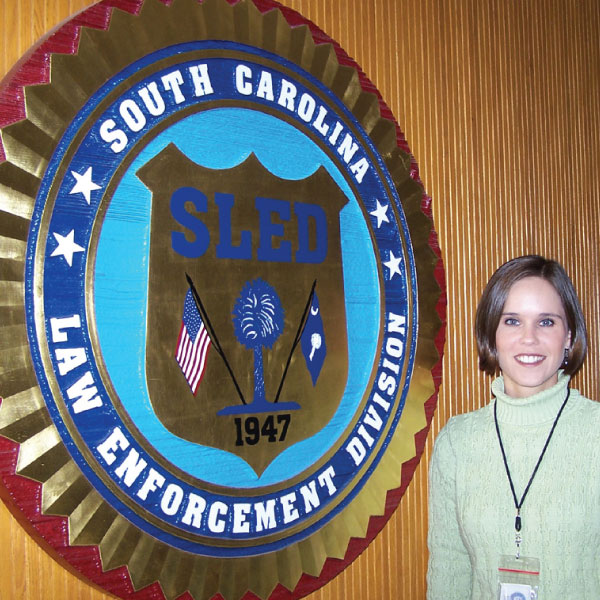
Forensic Science: Boosting Capabilities of Criminalistics Professionals
At a Glance
Beginning in February 2009, The National Institute of Justice (NIJ), a U.S. Department of Justice agency, entered into a cooperative agreement with Hooke College of Applied Sciences (HCAS) to train more than 400 trace evidence examiners over the next four years.
Situation
According to the National Academy of Science’s (NAS) 2009 report on the state of U.S. forensic laboratories, substantive changes are needed to improve the instruction and certification of scientists. With the proper training, criminalistics professionals can keep proficient with new developments and technologies in their field, advancing the country’s forensic capabilities as a whole.
Issue
Continuing education courses are expensive, and most forensic laboratories do not have the proper funding to support career-spanning training along with travel expenses. Furthermore, traditional week- long lecture-based forensic courses fail to foster critical thinking, which is imperative to identifying trace evidence materials.
Solution
Through a cooperative agreement with the National Institute of Justice (NIJ), Hooke College of Applied Sciences (HCAS) is providing affordable education to new and seasoned forensic scientists nationwide. All expenses—including tuition, travel, meals and accommodations—are paid by the NIJ Forensic Science Training Development and Delivery Program.
The Hooke College Forensic Microscopy Training Delivery Program (FMTDP) is one of the nation’s only continuing education programs to offer American Board of Criminalistics— accredited, hands-on laboratory training for forensic trace evidence examiners. Students are able to learn from forensic experts and use the latest equipment and techniques, which emphasize sample preparation, microscopical characterization, instrumental analysis and practical application.
“One of my favorite parts of the classes was being able to immediately apply the lecture material,” said Kathy Woodward, a Forensic Scientist from the South Carolina Law Enforcement Division’s Trace Evidence Laboratory. She attended the Fiber Identification and Scanning Electron Microscopy courses hosted by HCAS.
“The courses were structured so that concise, informative lectures were immediately followed by practical exercises using the information that had just been shared. We also built on each section throughout the course. All the hands-on experience was an excellent way to reinforce lectured concepts.”
HCAS classes comprise a mixture of scientists, in addition to forensic scientists, from a wide array of industries and backgrounds, which is helping to allay the NAS report’s concern that forensic scientists have not been sufficiently connected with the scientific community in the past. Instructors are experts in their field (some are experienced trace evidence examiners and others have experiences from a variety of allied sciences and industries) who practice, and many times develop, the analytical techniques they teach every day.
According to Woodward, “I enjoyed interacting with other experts and those teaching the classes. The instructors were not only well versed in their field, but also very approachable. I felt comfortable enough to ask ‘hey can you help me?’ and receive one-on-one guidance on new techniques.”
All the program courses incorporate a Web- Classroom-Web blended learning approach. This model encourages self-directed learning and is tailored to strengthen critical thinking skills by combining classroom instruction with distance learning. The NIJ considers these skills to be critical components to the ongoing instruction of forensic personnel.
Each course starts with web-based instructional material that introduces students to a virtual version of the microscope they will use in class. A review of general concepts and vocabulary ensures students from a range of backgrounds will be ready to take full advantage of the instructor-led classroom sessions.
Woodward, who had taken a course on the Polarized Light Microscope (PLM) prior to enrolling in the Fiber Identification class, said, “The web pre-work for the Fiber Identification class (which uses PLM) was a nice refresher for me.”
The hands-on classroom/laboratory portion of the courses range from 3 to 4.5 days and provides students with access to state- of-the-art analytical instrumentation and instructional aids.
Following the classroom portion of each course, a web-based post-course component allows NIJ students to apply their newly acquired knowledge and skills in a real-world setting. As part of the post-course component, students are provided unknown samples to analyze back at their laboratory before meeting online with their peers and instructors to discuss their findings. These unique post-course sessions provide a forum for students and instructors to exchange ideas on forensic techniques and analytical methodology.
Woodward said the post course was very motivating. “It was good to go back to the lab and identify post-course unknowns using our instrumentation. It also motivated me to immediately continue reinforcing what I had learned.”
Results
Response to the program has been tremendous, with students from 71 labs representing 44 states and Puerto Rico traveling to Westmont, IL to receive high-quality technical forensic microanalysis training. Historically, the program has filled all available seats.
Students agree that the hands-on experience gained from the program builds confidence and solidifies what they have learned in the classroom setting. Even if a student is unfamiliar with a technique prior to enrolling in the program, they leave assured of their ability to apply it on the job.
“Taking classes at Hooke was a very good experience. I was able to master complex techniques in a very short amount of time and then share them with my colleagues. Now we’re all benefiting from this training,” Woodward said.